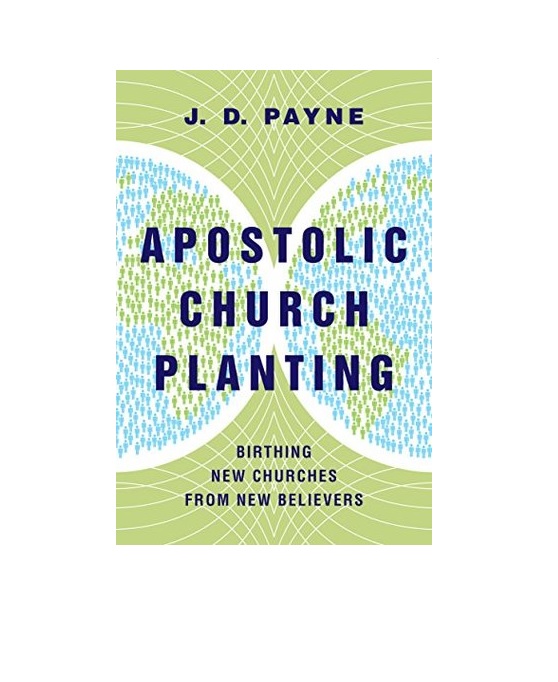The book’s strength is its simplicity; it’s also the glaring weakness. There are some decent practical thoughts here and there, but little that a moderately sensible person wouldn’t think of. The bullet point summaries at the end of each chapter may be helpful for reference. In fact, that would probably be the most efficient way to digest the book’s better contents, because the author does not spend much time on argumentation. He does give some guidelines, and he also outlines processes and transitions which could prove profitable throughout a “plant,” if not to follow exactly then at least as stimulus for further thought. All these things are at least of some use.
But the book suffers from considerable anemia in its lack of laying out doctrinal fundamentals with comprehensive rigor, rarely moving beyond strict words to proper principle and sense, and an incisive application of such. Among the problems here are the simplistic and baptistic assumptions and assertions which run throughout. The author is emphatic in his conception of biblical church planting as “evangelism that results in new churches.” Now this is obviously true, in a sense, in that where the gospel is preached and Christ is received among former pagan unbelievers, a church then may blossom.
But it is not true in another and equally biblical sense, one that is contemporaneously relevant to the USA.
For example, in the NT much evangelistic effort was not spent on unbelieving pagans, per se, but on believers and religious professors, i.e. in the synagogues (which comprised part of the church) of that time—many of whom worshipped and believed in God and had the Scripture, yet had not heard or believed in what the Puritan Nathaniel Stephens calls “the final exhibition of the promise.” Still others, like some of those to whom Peter preached, were also in the visible church (synagogue) yet had consented to or demanded the crucifixion of Christ, and thus, though they were the people of God as to covenant relation and outwardly, they were entirely without the essence of true religion, regeneration, and, they were especially ignorant of their particular relation to the progress of redemption in history.
As a former Baptist and now a convicted Presbyterian of some time, I imagine that, to the Baptist mind, this probably doesn’t make much if any sense. This is due in large part to the Baptist view of Scripture, covenant, etc. To the typical Baptist, the church is considered, directly or indirectly, as a strictly spiritual institution that began in the New Testament, probably in Acts 2, and is comprised exclusively of the elect or saved. But that’s not true. The church began in Genesis 3 with Adam and Eve, having been given the first gospel promise (Gen. 3:15) and worship ordinance (Gen. 3:21, 4:4), and the church continued immediately to their posterity: Cain and Abel in Genesis 4; the former being merely a part of the visible church before being judged and cast out for impenitence as an apostate, the latter dying a martyr in the invisible church as one faithful.
Essential principles like this simply aren’t dealt with in this book.
But such is unfortunate, because, I believe this is particularly relevant to the question of church planting and missionary efforts today. Payne’s assumption and assertion, throughout the book, is, that missionary labor must chiefly be spent on “unreached-unengaged” people groups, whether here in the USA or elsewhere. But “unreached” is defined by him in such a way as to make much of the evangelism in Acts to be superfluous and wasteful, being that it was not always to particularly pagan unbelievers, but to the church, both Jews and Gentile proselytes, which had yet to learn of and apprehend the final exhibition of the promise in Christ having come. Consider the book of Hebrews. It is, in fact, in its immediate context, a warning to the (New Covenant) Church not to go back to the (Mosaic Covenant) Church, out of which they had formerly come, having been more fully evangelized and taught according to the final exhibition of the promise. In other words, the (New Covenant) Church evangelized the (Mosaic Covenant) Church.
What does this mean? What is a present day application? In principle, it means that missionary efforts are not strictly or even necessarily chiefly to pagan unbelievers, but they can and should also be to the church visible, to believers, professors, and their children—specifically to those who are immature, not fully instructed, and/or are stuck in a declining, apostate, or erroneous expression of the church and of the Christian religion, even without their knowing it. Such was the case in the NT in principle. And such was the case during the First Reformation. And, if that doesn’t sound like much of the American church today, I think it’s time to check our hearing. Much of evangelicalism, fundamentalism, and of course Roman Catholicism are direct correlations here.
On these points, and others like them, the book is largely without meaningful perception and discernment. It is content to skim the surface. Thus it relegates missions chiefly to the fields of the unreached pagans. Granted, its simplicity affords it an ease of accessibility and immediate practicality—there are some truths, basic though they are, which are good—but its simplicity simultaneously hamstrings it from being particularly profitable with the principles and sense of Scripture perhaps most relevant for us today. Ironically, this also means that the book, contrary to its claim and name of “apostolic” method, is against underlying apostolic principles of church planting, or at the very least hinders such. In this way, I must confess that I think such approaches, and especially such thinking that leads to and accepts such approaches, will, though doing some good here and there because the Lord is merciful, nevertheless prove to be long term harmful to the church.
